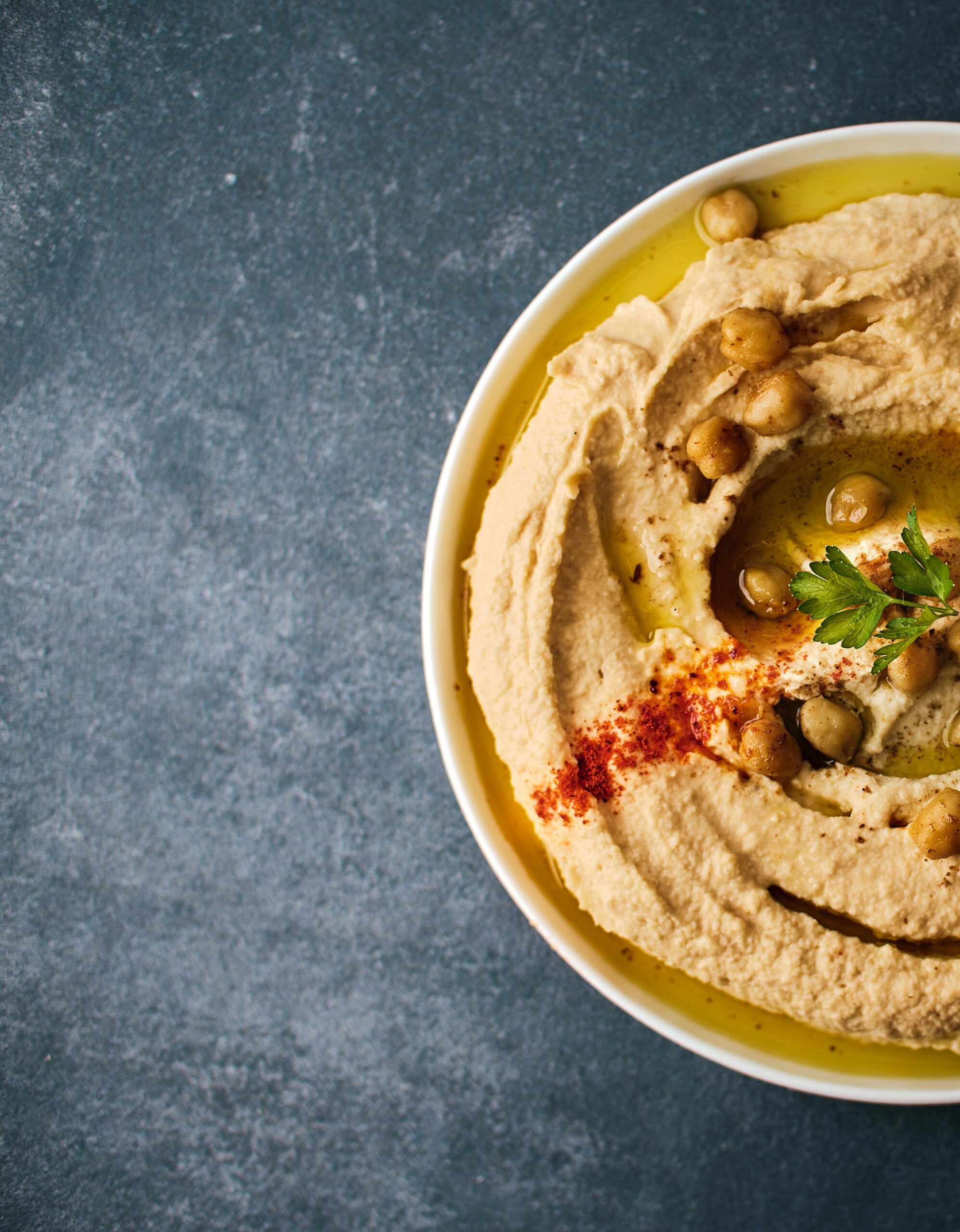Creamy Homemade Hummus
Picture this: a velvety, creamy concoction that dances on your taste buds, brimming with the goodness of chickpeas, tahini, and a symphony of flavors. Hummus, a delightful Middle Eastern creation, has taken the culinary world by storm. But it’s not just about its irresistible taste; it’s also a nutritional powerhouse that epitomizes the Mediterranean diet’s virtues. In this gastronomic journey, we’ll unveil the secrets of crafting the perfect hummus while delving into the nutritional bounty it offers within the realm of the Mediterranean lifestyle.
The Mediterranean Diet: A Taste of Health and Longevity:
Before we dive into crafting hummus, let’s explore the essence of the Mediterranean diet – a nutritional treasure trove that embraces vibrant flavors, fresh produce, and wholesome ingredients. Known for its ability to promote heart health, enhance longevity, and reduce the risk of chronic diseases, the Mediterranean diet is a lifestyle worth adopting.
1. Olive Oil: At the heart of the Mediterranean diet is the liquid gold known as olive oil. Rich in monounsaturated fats and antioxidants, olive oil adds a luxurious touch to dishes while contributing to heart health.
2. Fresh Fruits and Vegetables: Colorful and diverse, Mediterranean cuisine celebrates the abundance of nature. Fresh fruits and vegetables provide essential vitamins, minerals, and dietary fiber that support overall well-being.
3. Lean Proteins: Fish, poultry, and legumes serve as sources of lean proteins, essential for muscle growth and repair. These proteins are celebrated for their contribution to a balanced diet.
4. Whole Grains: Whole grains like quinoa, brown rice, and whole wheat pasta offer complex carbohydrates that provide sustained energy and satiety, crucial for an active lifestyle.
5. Nuts and Seeds: Nuts and seeds add a delightful crunch and a dose of healthy fats to Mediterranean dishes. These nutrient-dense gems are associated with reduced inflammation and improved cognitive health.
The Hummus Revelation:
Now, let’s shine the spotlight on hummus, a star creation in the Mediterranean culinary repertoire. Hummus embodies the philosophy of the Mediterranean diet by blending simple yet wholesome ingredients into a culinary masterpiece that’s as nourishing as it is scrumptious.
Hummus Nutritional Benefits:
1. Chickpeas: A Plant-Powered Protein Source: At the heart of hummus lies the humble chickpea, a versatile legume packed with protein and dietary fiber. Chickpeas offer plant-based protein that promotes muscle health and helps keep you full for longer periods.
2. Tahini: A Sesame Seed Elixir: Tahini, a silky paste made from ground sesame seeds, infuses hummus with a luscious texture and a wealth of nutrients. Rich in healthy fats, tahini contributes to heart health and provides a source of essential minerals like calcium and iron.
3. Garlic: A Flavorful Health Elixir: Garlic, a beloved Mediterranean seasoning, not only imparts a distinct flavor to hummus but also offers immune-boosting properties and potential cardiovascular benefits.
4. Lemon Juice: A Citrus Burst of Vitamin C: The zing of lemon juice isn’t just for taste; it’s a source of vitamin C, an antioxidant that supports immune function and contributes to skin health.
5. Olive Oil: The Elixir of Health: As the Mediterranean diet’s emblematic ingredient, olive oil drizzled on hummus enhances its taste while delivering monounsaturated fats and antioxidants that support heart health.
Crafting Creamy Homemade Hummus:
Ingredients:
- 2 cups cooked chickpeas (canned or boiled)
- 1/4 cup tahini
- 3 cloves garlic, minced
- Juice of 1 lemon
- 2 tablespoons olive oil
- Salt and pepper to taste
- 1/4 teaspoon cumin (optional, for added flavor)
- Water (for adjusting consistency)
Instructions:
- Blend Chickpeas: Start by blending the cooked chickpeas in a food processor until they form a coarse paste.
- Add Flavorful Elements: Incorporate minced garlic, tahini, lemon juice, olive oil, cumin (if using), salt, and pepper into the chickpea mixture.
- Blend to Perfection: Blend the mixture until it reaches a smooth and creamy consistency. If needed, add water gradually to achieve your desired texture.
- Taste and Adjust: Taste the hummus and adjust the seasoning according to your preferences. You can add more lemon juice, salt, or spices to tailor the flavor to your liking.
- Serve with Panache: Transfer the hummus to a serving bowl. Drizzle with a touch of olive oil and sprinkle with a pinch of paprika or chopped fresh herbs for an elegant touch.
Pairing and Dipping Delights:
Hummus is a versatile delight that pairs effortlessly with an array of accompaniments. From crunchy vegetable sticks to whole-grain pita bread, hummus can be customized to suit your preferences.
1. Fresh Vegetables: Sliced carrots, cucumber, bell peppers, and cherry tomatoes offer a refreshing contrast to the creamy hummus.
2. Whole-Grain Pita Bread: Whole-grain pita bread or pita chips provide a hearty and satisfying base for scooping up hummus.
3. Mediterranean Medley: Drizzle hummus with olive oil, and garnish with chopped olives, sun-dried tomatoes, and crumbled feta cheese for an enchanting Mediterranean twist.
Conclusion: A Nutritional Oasis of Flavor:
As we conclude our journey through the world of hummus and the Mediterranean diet, remember that healthy eating need not compromise on flavor. Hummus stands as a testament to the beauty of simplicity and the nourishing potential of whole, unprocessed ingredients. By indulging in this culinary masterpiece, you’re not only savoring a delightful dish but also embracing a lifestyle that celebrates vitality, longevity, and the joy of good food. So, whether you’re enjoying hummus as a wholesome snack or incorporating it into your Mediterranean-inspired feasts, relish the symphony of flavors that honor tradition and foster well-being. Your culinary adventure is just a scoop away – bon appétit!





